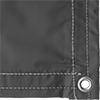Filter by
Thickness
Color
Material
Maximum Temperature
Flexibility
Performance
DFARS Specialty Metals
Insulation Type
Clarity
Minimum Temperature
Finish
Safety Equipment
Heating, Ventilation, and Air Conditioning
Raw Materials
Material Handling
Facility and Grounds Maintenance
Fluid Handling
Fabricating and Machining



















































